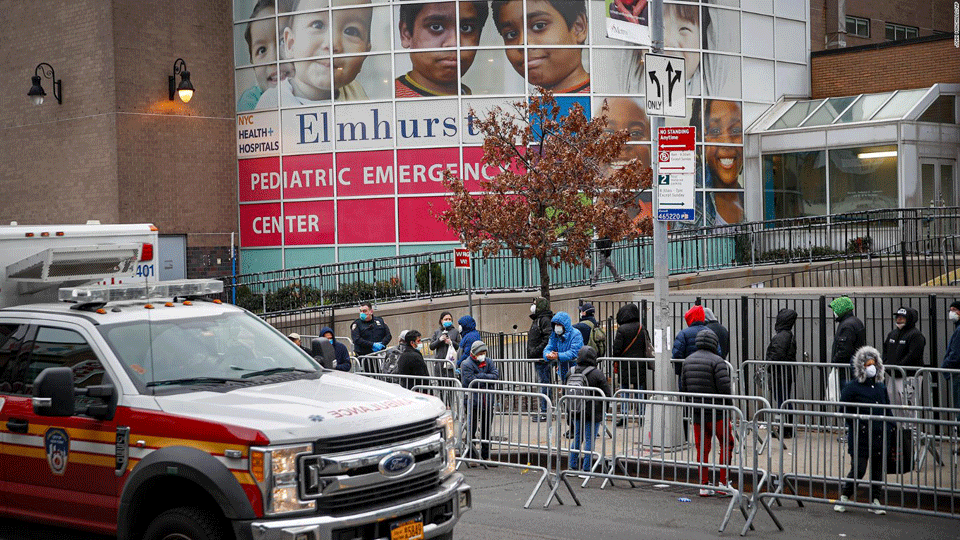
BERKELEY, Calif.—It may be stating the obvious, but while the coronavirus pandemic is bad – 6.2 million sufferers and 444,563 dead worldwide as of mid-morning June 17 – it could have been worse, a lot worse, a new comprehensive study shows. Try almost 90 times worse.
What would that mean, in practical terms? Though the scientists didn’t say so, if the U.S., like GOP President Donald Trump, had been in denial, we would have had 60 million coronavirus sufferers – including those whose illness was confirmed, those whose illness was unconfirmed but present, those who recovered and those who have died – from January through April of this year.
And had governments and individuals not intervened, ordering everything from hand-washing to national lockdowns, there would have been 62 million confirmed cumulative cases of coronavirus-infected people worldwide in those same months. Given the lack of coronavirus testing then, the worldwide number would be as high as 530 million, the team at the Global Policy Laboratory at the University of California at Berkeley, calculated.
The study, in addition to being published on the Global Studies Lab website, http://www.globalpolicy.science/covid19, was also published by the scientists in the journal Nature, and in a second journal, Medical Express.
The scientists, convened through Zoom conferences in a worldwide team, did not try to estimate how many more people would have died had nothing been done to stop the pandemic. “With so many infections, fatality rates would be much higher than anything observed to date,” they commented, and because the pandemic is, so far, unique.
And they had to make one key assumption which isn’t true on the ground: widespread majority prevalence of coronavirus testing. Still, the difference between action and inaction was striking.
“So many have suffered tragic losses already. And yet, April and May would have been even more devastating if we had done nothing, with a toll we probably can’t imagine,” said Prof. Solomon Hsiang, the center’s director and the study’s lead author.
“It’s as if the roof was about to fall in, but we caught it before it crushed everyone. It was difficult and exhausting, and we are still holding it up. But by coming together, we did something as a society that nobody could have done alone and which has never been done before.”
The scientists analyzed 1,717 local, regional, and national policies implemented in China, South Korea, Italy, Iran, France, and the U.S., starting from when the virus emerged worldwide in January through April 6.
Before the nations started imposing restrictions, the rate of coronavirus infections was rising by 38% a day, they reported. It’s dropped very sharply since then, though the cumulative number of infections is still increasing.
The findings, set out in a table and maps on the website are striking – especially the maps. The worst areas were in dark red, and lighter pink showed smaller hotspots.
So South Korea – one of the nations with early and effective countermeasures – had one pink area in the southwest as of April 6. Had Korea done nothing, the entire country would have been dark red, the study found.
Similarly, Italy’s red hotspot as of April 6 was an area in the northwest, bordered by the Alps and extending to just north of Tuscany. Italy imposed a national lockdown which it is only now starting to lift. Had it not done so, Italy too would have had an all-red map.
The U.S. map as of April 6 confined red zones to the New York City metro area, New England, New Jersey, New Orleans, and north of Seattle, with smaller pink spots elsewhere. Those were the areas, though the Berkeley scientists did not say so, that took aggressive measures – very early, in Seattle’s case – against the virus.
Had the U.S. done nothing, as Trump advocated, though again the researchers politely did not say so, everything north of the Ohio and Potomac Rivers and east of the Mississippi would have been one giant red zone, along with New Orleans and most of Washington state. Pink spots would dot the rest of the U.S.
The U.S. had 4.8 million total cases as of April 6, including people who caught the virus but have since recovered. The current number of infected people, as of 10:30 a.m. on June 17: 2,141,276. The number of dead as of that time: 117,030.
The number of avoided U.S. cases, researchers said: 60 million. The number of avoided deaths: Unquantifiable.
In numerical terms, the biggest contrast in cumulative cases was in China, where the virus began its voyage toward the rest of the world. The Chinese data extended only through March 5, after the nation successfully completed a crash effort to build hospitals, test people, quarantine victims, and more.
The actual result on that date of confirmed cumulative Chinese coronavirus cases: 74,473. The projected result had China done nothing: 6,395,576. The actual case map shows deep red around Shanghai and the Yangtze valley. The done-nothing map shows deep red everywhere except the far western provinces.
Hsiang said continuing those policies has likely averted many more millions of infections and thousands of deaths.
That has policy implications for now, as governments and people let up on restrictions. One key finding was there is an approximately three-week time lag between imposing a coronavirus-related policy – a crackdown or a letup – and its impact starting to show up in the coronavirus numbers.
Some policies worked better than others. The ones that worked best in all nations were business closures, national lockdowns, and stay-at-home orders. Data varied by country on the effectiveness of banning large crowds and closing arenas, and data on closing schools was inconclusive and could change, the scientists found.
“The last several months have been extraordinarily difficult, but through our individual sacrifices, people everywhere have each contributed to one of humanity’s greatest collective achievements,” Hsiang said in a statement from the Global Studies Center.
“I don’t think any human endeavor has ever saved so many lives in such a short period of time. There have been huge personal costs to staying home and canceling events, but the data show that each day made a profound difference.
“By using science and cooperating, we changed the course of history.”










